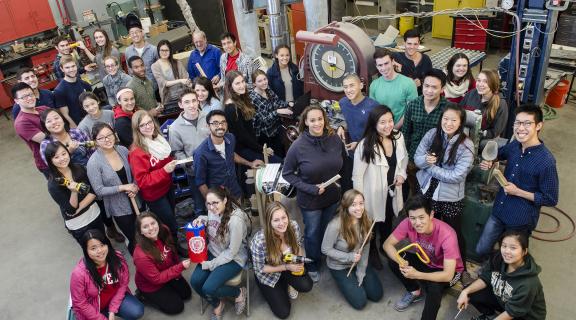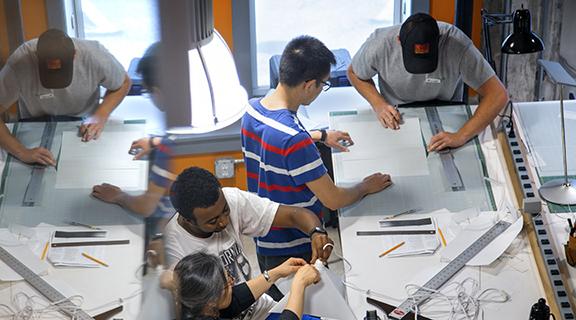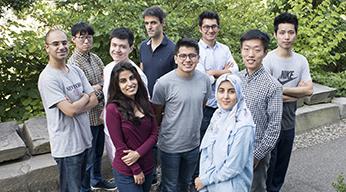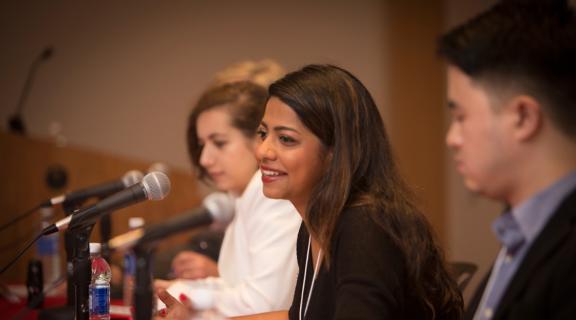
Admissions
Why Cornell Engineering?
"Scientists study the world as it is; engineers create the world that never has been."—Theodore von Karman
Cornell engineers challenge the status quo and do great things. Steeped in an environment of questioning, and with a focus on innovation, Cornell Engineering pursues excellence in all areas. Its faculty, students, and alumni design, build, and test products, improve the world of medicine, inform and shape our laws, create and drive businesses, become research luminaries, and overcome real and perceived barriers to achieve scientific breakthroughs that advance the quality of life on our planet.
We invite you to learn more about Cornell Engineering and its programs.
Did you know?
In 1997, The New York Times hailed Prof. Yu-Hwa Lo’s work with potential to “revolutionize the industry.” Dr. Lo’s patent for a compliant universal substrate for growing pure, single crystals was seen as a major turning point in manufacturing. In 1988, he co-founded CTO of Nova Crystals, Inc., which develops and manufactures high-end fiber-optic data and telecommunications components.
1972 – Jack Muckstadt (still active as a Cornell faculty member) develops the mathematical basis for determining the number and allocation of spare parts needed to repair aircraft having multiple indentured level subsystems (e.g., engines and avionics systems). This multi-echelon mathematical approach is used by all military services in the US and by militaries in many other countries. It has been used to manage and procure well over $100B of parts in the US since 1973.
First retractable landing gear for military planes was developed in 1932 by Leroy Grumman, (Mechanical Engineering, 1916). Designed at the request of the US Navy to replace hand-cranked landing gearing, it was first installed on the Grumman FF-1 biplane fighter.
In 2011, Intel announced sponsorship of the newly created Cornell Cup. The international embeded technology competition challenges college students around the world to think of, design, and build the next generation of embedded systems technologies. It is the first competition of its kind at the international collegiate level.
In 2013, Prof. Uli Wiesner (MSE)and grad student Hiroaki Sai (M.S. 2011, PhD) announced the creation of a process for synthesizing hierarchical porous polymer films, which could be useful in applications ranging from catalysis to bioengineering.








